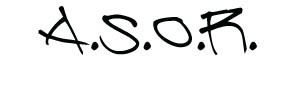Saturday, June 30, 2007
Vectors.how to:
measuring vectors by graphical method [the easier but inaccurate method]
1. prepare materials. [ruler and pencil.]
2. scale all your measurements. [i.e. 1cm= 20m]
3. plot the measurements on wherever you want to write it [paper is recommended]
4. measure the distance from the starting point to the ending point using your ruler.
5. convert it back to the original measurement. Using the example on step 2, say you measured
26 cm, converting it back to meters, you get 52m.
measuring vectors using the component method [accurate, but may require a little knowledge on SOHCAHTOA]
1.Given the distance to be measured, start by creating a graph kinda like the cartesian plane. the vertical line will be the Y-axis while the horizontal line will be the X-axis
2.Create a right triangle with one of the sides being the distance to be measured. [We shall call this side A]
3.Using your great math skills and extensive knowledge with trigonometry, try to find the X and
Y components.
4. Add all of your X and Y components.
5.The magnitude can be determined by the use of the Pythagorean theorem and the inverse tangent function for the direction.
- Swish-Slash Swiss-Cross
Saturday, June 16, 2007
Well, here it is, my very 1st post.A lot happened during these 2 weeks and i mean A LOT. Our teacher, Sir Mendoza, teaches lessons like there's no tomorrow. And i mean literally. One moment you're wondering how he got that type of answer, and after 23 seconds, Poof! He's off to another topic, leaving me clueless. Wow. I'm gonna need all my powers to catch up.
This week's lesson is all about SOHCAHTOA and vectors. The SOHCAHTOA lesson which is part of trigonometry, is a butt kicker. And he taught us that in only half an hour. Wow again. I'm really amazed with what our teacher can do. Its a good thing he allows us to use calculators in solving equations...
anyway... i think that's enough for my first post. Bye for now.
- Swish-Slash Swiss-Cross
Saturday, June 9, 2007
Fiber optics (optical fibers) are long, thin strands of very pure glass about the diameter of a human hair. They are arranged in bundles called optical cables and used to transmit light signals over long distances.
The light in a fiber-optic cable travels through the core (hallway) by constantly bouncing from the cladding (mirror-lined walls), a principle called total internal reflection. Because the cladding does not absorb any light from the core, the light wave can travel great distances.
- Swish-Slash Swiss-Cross

